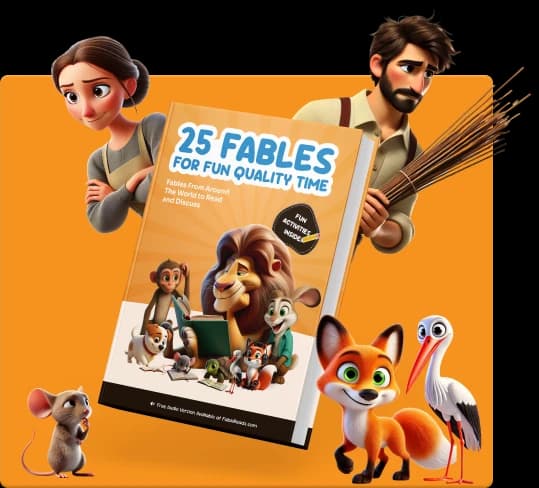Aesop | Greece
Der Löwe und die Maus
Ein Löwe verschont das Leben einer Maus, die ihn später aus einer Falle rettet.

Es war einmal in einem großen, grünen Dschungel ein riesiger Löwe, der es liebte, unter der warmen Sonne zu schlafen. Eines Tages rannte ein kleines Mäuschen aus Versehen direkt über die Nase des Löwen und weckte ihn auf. Der Löwe war gar nicht erfreut und fing das Mäuschen mit seiner großen Pfote.
Das kleine Mäuschen hatte große Angst und sagte zum Löwen: "Bitte iss mich nicht! Wenn du mich gehen lässt, verspreche ich, dir eines Tages zu helfen." Der Löwe konnte nicht anders, als zu lachen. "Wie könnte jemand, der so klein ist wie du, mir jemals helfen?" dachte er. Aber er war gut gelaunt und ließ das Mäuschen trotzdem frei.
Nicht lange danach geriet der Löwe in eine Falle. Ein Jäger hatte ein Netz aufgestellt, mit dem er den Löwen fangen konnte. Er versuchte zu brüllen und sich zu befreien, aber es gelang ihm nicht. Das kleine Mäuschen hörte das Brüllen des Löwen und erinnerte sich an ihr Versprechen. Sie lief schnell zum Löwen und begann, mit ihren kleinen, scharfen Zähnen an den Seilen zu nagen. Im Handumdrehen war der Löwe frei.
Der Löwe schaute das Mäuschen an und fühlte sich sehr dankbar.
Kaufen Sie ein Buch und helfen Sie dabei, Fabeln in die Welt zu bringen
Genießen Sie 25 ausgewählte Fabeln fürs Leben, gedruckt. Jeder Kauf unterstützt kostenlose Geschichten für Kinder, Eltern und Lehrer weltweit auf fablereads.com

















